Most of my blog posts recently seem to have started off with a “there are other spirits in the world that aren’t whisky” type of sentiment, which is getting a bit long in the tooth. However, I’m going to stretch the idea for one more post, again focusing on something that isn’t anything really to do with whisky. This time – agave spirits.
We’ve done tequila tastings in the past at TWE Vinopolis (the first TWE tasting that I attended, back in my misspent youth of not working here, was one) but with May 5th (yes, this post is a month late…we’ve been busy) being a special day in the Mexican calendar (although Wikipedia informs me that it’s only a regional holiday and is more an international day for celebration) we decided to get in on the action and spread our love of Tequila to the masses again, this time bringing along its shy but rowdy sibling – mezcal.
We called on the services of Declan McGurk, the Speciality Brands agave ninja, to lead us through a range of spirits, adding to the tequila education that he’s already doled out to many of our tastings regulars with a bit of information about mezcal.
First up here’s a quick rundown on how to make tequila and mezcal:
1. Grow some agave – Agave is, contrary to what many people think, not a cactus despite appearances. It’s a hardy flowering plant of which there hundreds of different species. To make tequila you can only use one of these – Agave Tequilana, aka Blue Agave. Mezcal also has rules about agave selection, but there are about 30 types you can use, with the most common being Espadin.
2. Harvest the agave, cook and crush it – In order to start the process of spirit-making you need to cook the agave, as it won’t ferment very easily otherwise. Once it’s cooked (in ovens for most tequila and in smoky pits for mezcal, giving them a characteristic clean or smoky taste respectively), it’s then crushed (either by machine or using stone ‘tahona’ wheels, drawn by animals or tractors) and the juice is saved for the next step.
3. Ferment the juice – Stage one of spirit-making is to create something to distil, and in the case of agave spirits it’s an agave beer, similar to the ancient Mexican drink of Pulque. The juice has yeast introduced (either by adding it or waiting for natural wild yeast to ‘infect’ it) and eventually alcohol occurs.
4. Distil the liquid – There’s a mix of pot stills and column stills in use across the world of tequila and mezcal, but most artisanal spirits use pots of varying sizes. When it comes to mezcal, which has much smaller levels of production than tequila, you are sometimes looking literally at clay pots in someone’s shed as distillation vessels…
5. Mature it if you want to – Unaged tequila will sit in steel tanks for anything from minutes to months to rest before bottling, but reposado and añejo spirits (rested and old, respectively) are further matured in wooden barrels in a manner similar to rum and whisky.
6. Drink it – Salt and lemon as an accompaniment to tequila shots is a great way to hide poor quality spirit. Good tequila can be happily sipped on its own without additions to deaden the taste buds.
One extra bit to add to that is the concept of Mixto tequila, in which the fermentable sugars don’t all have to come from blue agave. In other words, producers can add up to 49% sugar to the mix from other sources (often sugar cane) which will reduce the amount of agave-related flavour in the spirit and save money. While we generally advise that you go for 100% agave tequila there are some decent mixtos out in the world, although very few of them seem to make it to the UK.
Anyways, once you have your spirit it’s time to get drinking. Agave gives quite a different flavour to spirit than molasses, sugar cane or grain, as it is a cooked fruit rather than grain or burned juice. The fact that most tequila producers don’t usually distil to very high alcohol levels also allows more of the agave flavour to be left in the spirit, letting different tequilas and mezcals sing out in different ways, even when they’re not aged.
We kicked off the evening with Tapatio Blanco, an old favourite at TWE. It’s produced by the Camarena family, who also produce El Tesoro and Ocho, some of the rockstars of the tequila production world. We accompanied the tequila with some verdita, a non-alcoholic shot of green goodness made by Declan shortly before the tasting, which consists of pineapple juice, green herbs and a dose of chilli – it’s usually served alongside a tequila to freshen the palate, which it accomplishes in a fresh herby way with a hint of mint. Anyways, the tequila:
Nose: Fruity agave (a bit like fig rolls, but without so much heavy sweetness) and white pepper.
Palate: More white pepper (a characteristic flavour of distilled agave), crisp and stony minerality, green peppers, light oiliness and an underlying fruity sweetness.
Comment: One of the standards in my cupboard, balancing pepper against fruit.
We moved on to the next tequila in their range – Tapatio Reposado. Rested in oak for about 6 months before bottling (with the reposados legally having to spend between 2 and 12 months in wood) it’s picked up a bit of colour. This was served with a shot of sangrita also made by Declan’s fair hand, which is a red (and thus named for Sangre – blood) drink made to a constantly evolving secret recipe. With mild threats and bribery we managed to extract out of Declan the possibility of it containing Clamato juice, pomegranate syrup and the scariest hot sauce that he could find. It’s a bit like a spicy Virgin Bloody Mary with an extra fruity kick, and works well as a reposado accompaniment. However, what has the wood done to the flavour of the tequila? Read on:
Nose: Still a nice bit of fruity agave, as with the Blanco, as well as a hint of caramel and soft vanilla.
Palate: Creamy with a hint of oiliness, light pepperiness, sweet capsicum and light wood.
Comment: The peppery edges of the blanco are rounded off and the wood (ex-bourbon casks) has added in some of the traditional vanilla sweetness that you expect from oak aged spirits. Reposado tequila is a great place to start exploring tequila and it’s where many people end up again when they’ve finished.
We then moved on to our first mezcal of the night – Ilegal Joven. This isn’t available in the UK yet, although we’re currently hoping that it will appear in the next month or so. The Ilegal stable was created by a pair of bartenders from Guatemala, working at Café no Se in La Antigua. The bar became well known for stocking excellent mezcal, almost all of which was smuggled over the border into Guatemala as export restrictions stopped it getting out legally. After a few too many sticky situations involving border guards, organised crime and running out bribe money (and new laws allowing more freedom to export mezcal) the guys went legit and now work with a mezcal producer to make their own juice – Ilegal.
Joven is the mezcal version of a Blanco – unaged and normally packed full of agave flavour. As Ilegal use Espardin rather than Blue agave and then cook the piña (agave hearts) in smoky pits rather than steamy ovens it’s quite a different drop:
Nose: Copper pennies, green peppers and rubbery smoke.
Palate: Barbequed bacon (tasting note (c) TWE Shop manager Alex), sweet smoke, big smoky fruit (grilled bananas, sweet peppers and apples?) and a hint of white pepper
Comment: One of the most approachable mezcals I’ve tried so far – restrained in its smokiness, but still definitely smoky, as well as packed full of fruity agave flavour.
We then moved on to Del Maguey’s Tobala. Del Maguey was started in the 1990s by Ron Cooper, an artist who discovered a love of agave while working on a project in Oaxaca (the home of mezcal). He has since forged relationships with many small producers across Mexico, focusing on the artisanal and unconventional spirits that weren’t being made on a scale by which many people could try them. He still only releases a tiny number of bottles compared to many producers, but each has its own distinct character, from the excellently smoky Vida through to the ‘made by hanging a raw chicken carcass in the still during distillation’ Pechuga.
Tobala is named after the agave variety used to make it, a tiny plant that needs to grow for about 20 years before it can be used for mezcal production – rather longer than Blue Agave’s 8 years and Espadin’s 12.
Nose: Sweet rubbery smoke, tyre fires, candied fruit (mangos and papaya?)
Palate: Moss, wet rocks, bracken, cracked stones, crushed granite, coal fires, rubber and big black pepper.
Comment: My rather more flowery note reads ‘Like licking a wet rock while someone beats you around the head with a burning branch’. It’s one of the strangest spirits I’ve ever tried and I still have no idea if I like it. I think I’ll have to have another taste…
We moved away from the craziness of Del Maguey and back onto the (comparatively) safer ground of more Ilegal – this time the Ilegal Añejo. It’s aged in new American oak casks to give it a big woody influence:
Nose: “Bounty bars covered in caramel by a bonfire”
Palate: Peppery and oily with a sweet agave edge. Spicy wood, minty herbs and very light smoke just peeking around the corners.
Comment: Sweet, thick and very easy drinking. The smoke is hidden behind woody spice and just adds depth and richness. The hands down favourite of the night from those at the tasting – I suspect we may be getting a load of this in the shop as soon as it arrives in the country.
Last, but far from least, was the pièce de résistance from Tapatio – the Excelencia Gran Reserva. It’s an extra añejo (aged for more than 3 years by law, but in this case often up to 5 years) that’s spent time in both new oak casks and cognac casks, with the result being a blend of spirit that’s quite unlike most other tequilas.
Nose: Rich fruity oak, woody spice, lavender, sweet dark chocolate, rose Turkish delight.
Palate: Oily, sweet herbs, woody spice, more Turkish delight, sweet tea fading to a finish of tannic black tea, sweet wood and incense.
Comment: This is more a whisky drinkers tequila, with the wood influence rounding the edges off the tequila and adding in delicate spice and tannins. I have no idea where the rose flavoured Turkish delight comes from, but I rather like it.
And that was it for the evening, other than to hang around to beg a few more shots of verdita. Many thanks to Declan for presenting and the folks from Ilegal for getting a few bottles of their mezcal over before the release. I suspect we’ll be posting something up here on the blog when they’re more readily available.
For an on-the-spot rundown of the event there’s a collection of tweets from the night on Storify and a few photos over on Facebook. To sign up to our newsletter so you can hear about these events before they happen visit our tastings page.


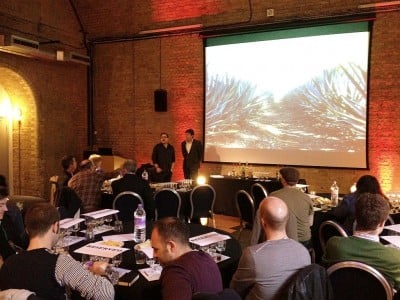
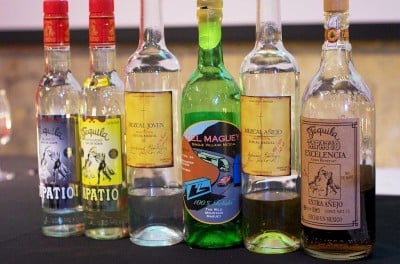
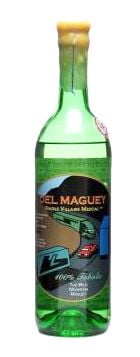
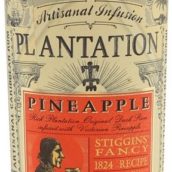


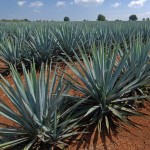




 Enjoy responsibly
Enjoy responsibly
Comments
[…] to delve into the world of agave spirits. We’ve written a few times on the blog about how Tequila, as well as its rustic cousin mezcal, are made, but we haven’t talked quite so much about […]